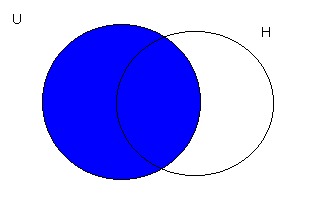The Revised Square
The traditional Square of Opposition expresses purported semantical relationships among categorical sentences. As we will see in this section, the traditional square is incorrect. When we are done revising the square, the only relation which actually obtains is the relation of contradiction between A and O, and between I and E.
To see why other relations do not hold one must note an important difference between universal and existential categorical sentences. Universal sentences can be true even when their subject terms are empty, whereas particular categorical sentences are false when their subject terms are empty. We express this difference by saying that particular categorical sentences have existential import whereas universal categorical sentences do not.
To illustrate this, suppose that the subject term "unicorn" is empty. This means that there are no unicorns. Then
| All unicorns are horned. |
is true, while
| Some unicorns are horned. |
is false. The E categorical proposition is also true, the O categorical sentence is false. The Venn diagram for the special case when the subject term is empty demonstrates this:

Notice that we have shaded the circle which represents the subject term to show that it is empty. But given this diagram, it is clear that A and E are true, but I and O false. Thus the inference from universal to particular, the inference we have called subalternation, is an invalid form of inference.
Exercise: Using Venn diagrams, explain how all the relations except contradictories break down, using the Venn Diagram in which the subject term is empty.
|
|
|
| table of contents | List of Exercises |